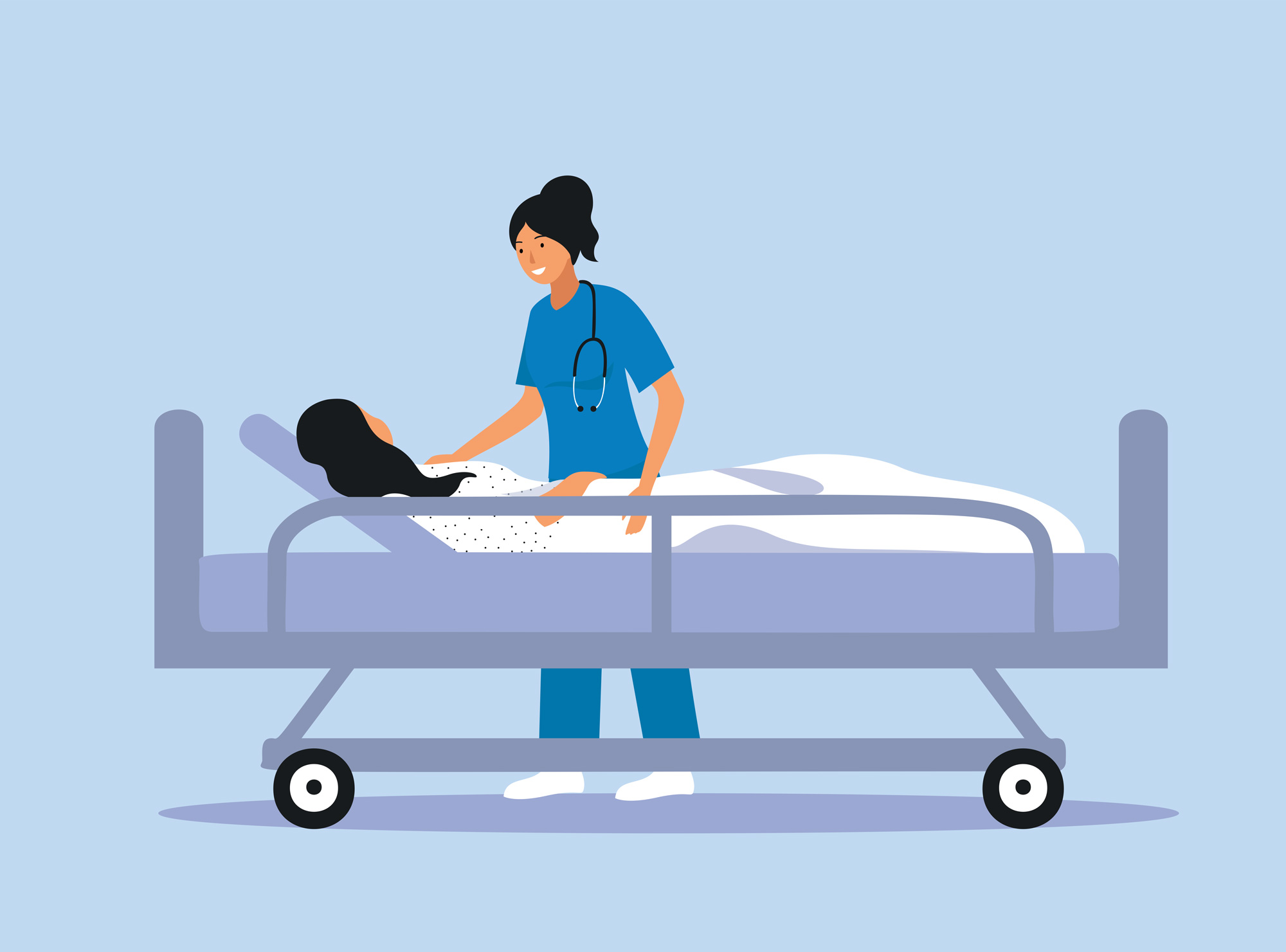Use your voice for those who can’t speak up.
I’ve been a nurse for 46 years, serving in positions from critical care staff nurse to chief nurse executive. Last year, I faced a new role: cancer patient. After experiencing post-menopausal spotting, I consulted my gynecologist who performed a cervical biopsy. A few days later, I learned that I had endometrial cancer. I had a total hysterectomy, stayed one night in the hospital, and was ‘cured’ within 10 days of diagnosis.
Eight months later, I experienced a second episode of spotting. My cancer had recurred. My provider prescribed a two-phase (external and internal) radiation regimen. During the first phase, I worked full-time, played tennis, and felt optimistic about my prognosis.
The second phase involved five rounds of internal radiation (brachytherapy) twice a week. Each treatment required anesthesia and several hours of recovery. The care team educated me about the procedure, its side effects, and expected recovery. I found my nurses, CRNA, and radiation oncology team competent and compassionate. At the end of the first treatment, as they removed the catheter and instruments, I experienced the worst pain I could have imagined. Although the team removed the instruments quickly, the severity of the pain was 20 on the 1 to 10 scale. Moreover, I was totally unprepared for it.
8 steps for making effective nurse-patient assignments
A new patient-acuity tool promotes equitable nurse-patient assignments
From that Thursday afternoon until 6:30 am the next Tuesday, the time of my second brachytherapy, I didn’t rest. I dreaded having to experience that agony again.
As soon as I arrived for my second treatment, I talked to my care nurses about my pain concerns. They said that many women told them about pain during instrument removal. When the CRNA met with me, I insisted that we have a solution before beginning the therapy. She suggested that my radiation oncologist use lidocaine gel on the instruments during insertion to help alleviate pain upon removal. She also developed a pain management plan for the day so that I would have more meds on board before instrument removal.
It worked! Catheter and instrument removal occurred without pain. I sailed through the full course of radiation therapy and rang the bell with my cure 11 months after my initial diagnosis.
Thus began my mission to include lidocaine gel—a safe, effective, inexpensive, and readily available solution—as standard operating procedure during brachytherapy. Clinicians may think that pain of short duration, no matter how excruciating, is somehow acceptable. I also realized that many women endure this pain and don’t have the voice, knowledge, or empowerment to insist on a solution.
As a nurse, patient, patient advocate, educator, and administrator, I knew that I had to speak for those women. I talked to every CRNA I met about the need for lidocaine gel. I met with my nurse practitioner and care nurses so that they could spread the word. I had conversations with my radiation oncologist, assuring him that if his penis were going through what I went through, that he would be immersed in a tub full of lidocaine gel. He changed his protocol.
When nurses are patients, we can use our knowledge and voice to call out what’s working well and what’s not. We can bring issues to the attention of the right people and help find solutions. I believe nurses have a higher responsibility to do so because of our role as educated advocates. I felt that responsibility even more deeply after completing my therapy. This diagnosis and treatment allowed me to use my knowledge, my voice, and my platforms to educate others and advocate for change.
I hope to continue my patient advocacy by working with the American Brachytherapy Society to create sustainable improvement in the patient experience. As we celebrate nurses this month and the difference that we make every day in every setting, remember that your voice matters.
Melissa A. Fitzpatrick, a member of the American Nurse Journal editorial board, is president of Kirby Bates Associates in Chapel Hill, North Carolina, and board member of UNC Rex Healthcare.
American Nurse Journal. 2023; 18(5). Doi: 10.51256/ANJ052360



















9 Comments. Leave new
Great post, Melissa! It is so important not only to advocate for our patients, but also to advocate for ourselves. I am so glad you’ve recovered!
Colleen, thank you so much !! Going STRONG and am so grateful. Please take good care !!
Thank you for sharing this. Thank you for being an advocate. And thank you for making me laugh with the penis reference 😂. So true! I said something similar once to a PCP who didn’t want to give me Diflucan and said just use the cream.
Thanks, Sherri !! The gender disparities in clinical care are REAL !! Hope to see you again soon my friend. HUGS.
The article “When a Nurse is the Patient” reminded me of all the insights I have shared with my colleagues and caregivers when I was a patient myself battling the same diagnosis as the author, Melissa A. Fitzpatrick. Caregivers do listen and take note, even change established protocols when a colleague as a patient, voices some concern. That’s how one can guarantee better care for all our patients.
Thank you so much for your note, Cecilioa. I agree that nurses using our voices is the surest guarantee of better patient care. I hope you are now healthy too and wish you all the best. Happy nurses’ month !!
Melissa A. Fitzpatrick’s journal story, “ When a nurse is the patient”, was a very poignant revelation that elicited an immediate change in practice that will benefit every woman undergoing brachytherapy. Until you are a patient and experience everything firsthand, you do not understand the angst that patients endure. This is a true story of first hand empathy and it restores my faith in being an effective change agent for patient care.
Vanessa, thank you so much for your note and kind words. I am so glad that my story resonated with you and hope we can all continue to use our voices as positive forces of change. Take good care and happy nurses month !!
Definitivamente ser enfermera y ser paciente ayuda a visualizar el dolor del paciente en si estadia hospitalaria, y como el padecer lo mismo hace cambiar nuestro que hacer profesional, soy enfermera y con 2 enfermedades autoinmune me motivo a ser enfermera el ayudar a sanar de manera comprensiva lo que siente el enfermo y su familia, que importante es lo que podemos hacer nosotros para mejorar el sentir del paciente